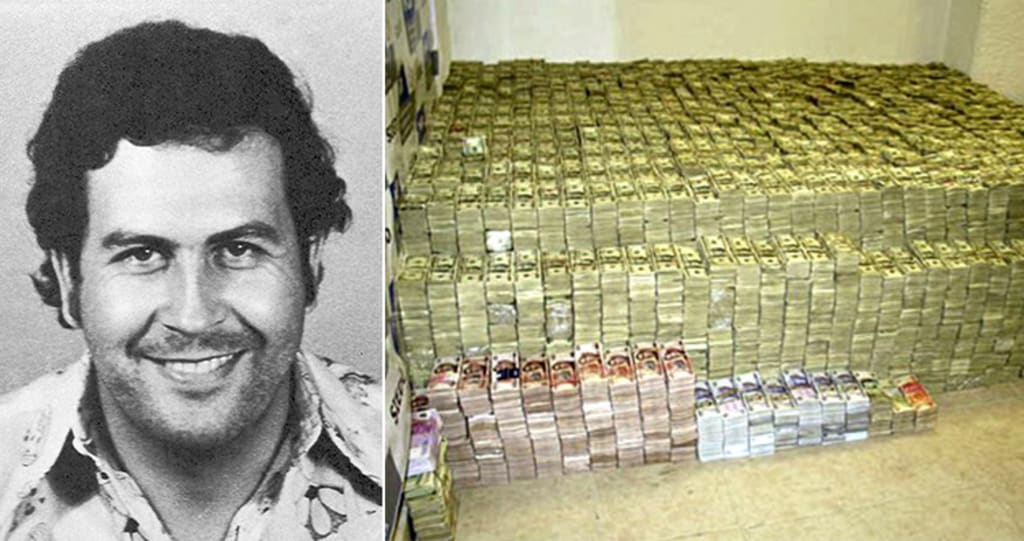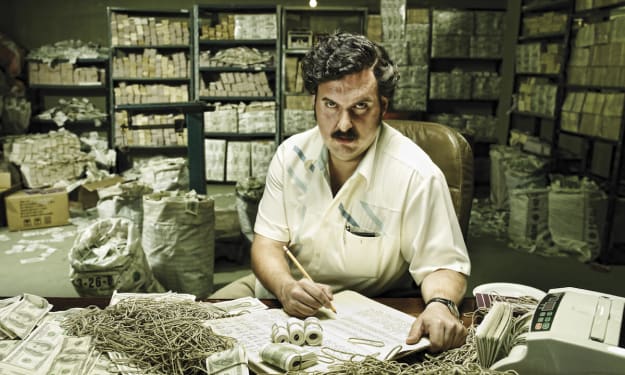Pablo Escobar's Innovative Drug-Selling Methods
A Look at the Tactics of the Infamous Colombian Drug Lord

Pablo Escobar was one of the most notorious drug lords of the 20th century. He built a billion-dollar empire through the sale of cocaine, amassing immense wealth and power along the way. But what made Escobar so successful was not just his ruthless determination, but also his innovative approach to drug selling. In this article, we'll take a closer look at some of the methods Escobar used to sell drugs and maintain his criminal empire.
Vertical Integration
Escobar was one of the first drug lords to use the strategy of vertical integration. This meant that he controlled every aspect of the cocaine trade, from the production of the coca leaves to the transportation and distribution of the finished product. By controlling every step of the process, Escobar was able to ensure that his cocaine was of the highest quality, while also keeping his costs low.
To achieve vertical integration, Escobar bought or built labs to produce cocaine, planes and boats to transport it, and even created his own network of distributors and couriers. This allowed him to bypass middlemen and ensure that his cocaine was delivered directly to his customers.
Hiding Cocaine in Plain Sight
Another method that Escobar used to sell drugs was hiding cocaine in plain sight. He used a variety of creative techniques to smuggle cocaine into the United States and other countries, including hiding it in shipments of legal goods or even burying it underground.
One of the most famous examples of this was Escobar's use of hollowed-out statues to smuggle cocaine. He would fill the statues with cocaine, seal them up, and then ship them to his distributors. When the statues arrived, the distributors would break them open and extract the cocaine.
Escobar also used more mundane methods of hiding drugs, such as taping packages of cocaine to the bottoms of airplanes or hiding them in shipments of legal goods like fruit or coffee.
Violence and Intimidation
Despite his innovative methods, Escobar was not above using violence and intimidation to maintain his empire. He was responsible for countless murders, bombings, and other acts of terror, all in the name of protecting his business interests.
One of Escobar's most notorious tactics was the use of sicarios, or hitmen, to eliminate his enemies. He would hire these assassins to kill anyone who posed a threat to his business, from rival drug lords to government officials.
Escobar was also not afraid to use violence against innocent civilians. He famously ordered the bombing of a commercial airliner in 1989, killing 107 people, in an attempt to assassinate a presidential candidate who was on board.
Bribery and Corruption
Another tactic that Escobar used to maintain his power was bribery and corruption. He would pay off government officials, police officers, and other authorities to turn a blind eye to his criminal activities or even actively protect him.
Escobar famously built an entire prison, La Catedral, that was essentially a luxury resort for himself and his fellow drug lords. He bribed prison officials and guards to ensure that they looked the other way as he continued to run his criminal empire from behind bars.
Conclusion
Pablo Escobar was a master of innovation when it came to drug selling. His use of vertical integration, creative smuggling techniques, and bribery and corruption allowed him to build an empire that was virtually unstoppable. However, his willingness to use violence and intimidation to protect his business interests ultimately led to his downfall.
Escobar's legacy continues to be felt today, both in Colombia and around the world. His tactics have been copied by other drug lords, and his name has become synonymous with the dark side of the drug trade. While Escobar's methods were undeniably effective, they also had a devastating impact on countless individuals and communities. The violence and corruption he brought to Colombia had far-reaching consequences that are still being felt today.
It is important to remember that while Escobar was a criminal mastermind, he was also a ruthless murderer who caused immeasurable harm. The innovations he brought to the drug trade should not be celebrated or emulated, but rather condemned and rejected.
Today, the fight against drug trafficking and organized crime continues around the world. While it is important to disrupt the supply chain of drugs, it is also crucial to address the underlying social and economic factors that drive people to engage in drug use and drug selling in the first place.
By addressing issues such as poverty, unemployment, and lack of access to education and healthcare, we can help to create a more just and equitable society where drug selling is not seen as the only path to financial success.
In conclusion, Pablo Escobar's drug-selling methods were undeniably innovative and effective, but they also had a devastating impact on countless individuals and communities. We must learn from his mistakes and work to create a more just and equitable society where drug selling is not the only path to financial success.
About the Creator
Aadhi Penten
With a love for exploring the world and a passion for sharing my experiences through words, my articles is a window into my life and a source of inspiration for those seeking adventure. From travel tips to personal stories






Comments
There are no comments for this story
Be the first to respond and start the conversation.